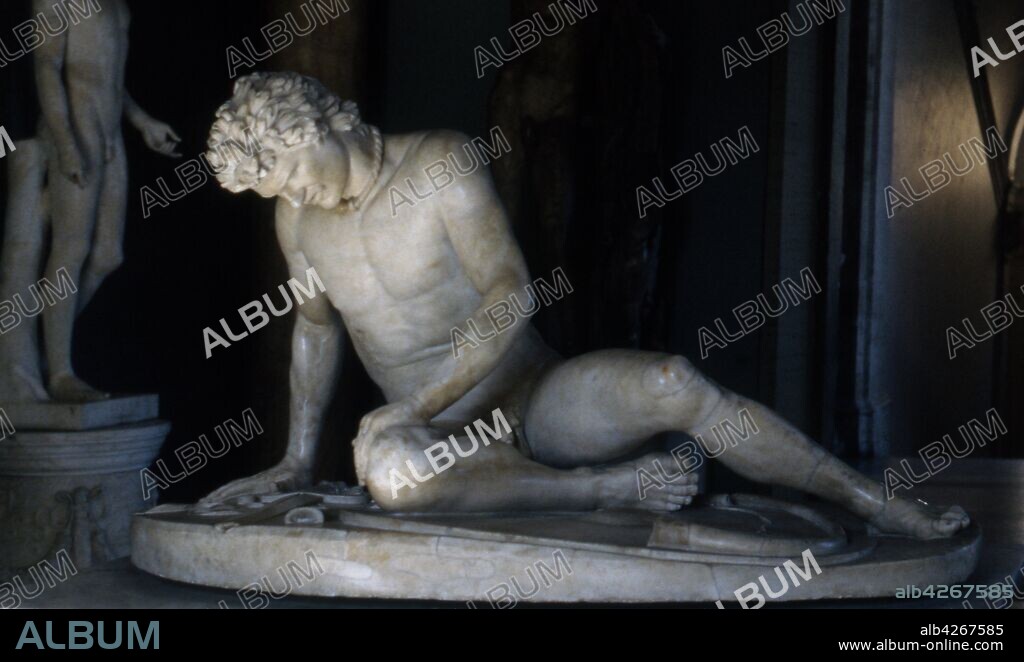alb4267585
The Dying Gaul, also called The Dying Galatian, or The Dying Gladiator, is an Ancient Roman marble copy of a lost Hellenistic sculpture, thought to have been originally executed in bronze. The original may have been commissioned some time between 230 and 220 BC by Attalus I of Pergamon to celebrate his victory over the Galatians, the Celtic or Gaulish people of parts of Anatolia (modern Turkey). The identity of the sculptor of the original is unknown, but it has been suggested that Epigonus, a court sculptor of the Attalid dynasty of Pergamon, may have been the creator.

|
Zu einem anderen Lightbox hinzufügen |
|
Zu einem anderen Lightbox hinzufügen |



Haben Sie bereits ein Konto? Anmelden
Sie haben kein Konto? Registrieren
Dieses Bild kaufen

Untertitel:
Siehe automatische Übersetzung
The Dying Gaul, also called The Dying Galatian, or The Dying Gladiator, is an Ancient Roman marble copy of a lost Hellenistic sculpture, thought to have been originally executed in bronze. The original may have been commissioned some time between 230 and 220 BC by Attalus I of Pergamon to celebrate his victory over the Galatians, the Celtic or Gaulish people of parts of Anatolia (modern Turkey). The identity of the sculptor of the original is unknown, but it has been suggested that Epigonus, a court sculptor of the Attalid dynasty of Pergamon, may have been the creator.
Bildnachweis:
Album / Universal Images Group / Universal History Archive/UIG
Freigaben (Releases):
Model: Nein - Eigentum: Nein
Rechtefragen?
Rechtefragen?
Bildgröße:
5100 x 3035 px | 44.3 MB
Druckgröße:
43.2 x 25.7 cm | 17.0 x 10.1 in (300 dpi)
Schlüsselwörter:
BILDHAUER • GALATER • GAULISH • KELTEN • KELTISCH • KOPIE • MARMOR • PLASTIKEN • SKULPTUR • SKULPTUREN • TECHNIK: SKULPTUR • TÜRKEI • VERVIELFAELTIGUNG • VERVIELFÄLTIGUNG
 Pinterest
Pinterest Twitter
Twitter Facebook
Facebook Link kopieren
Link kopieren Email
Email
